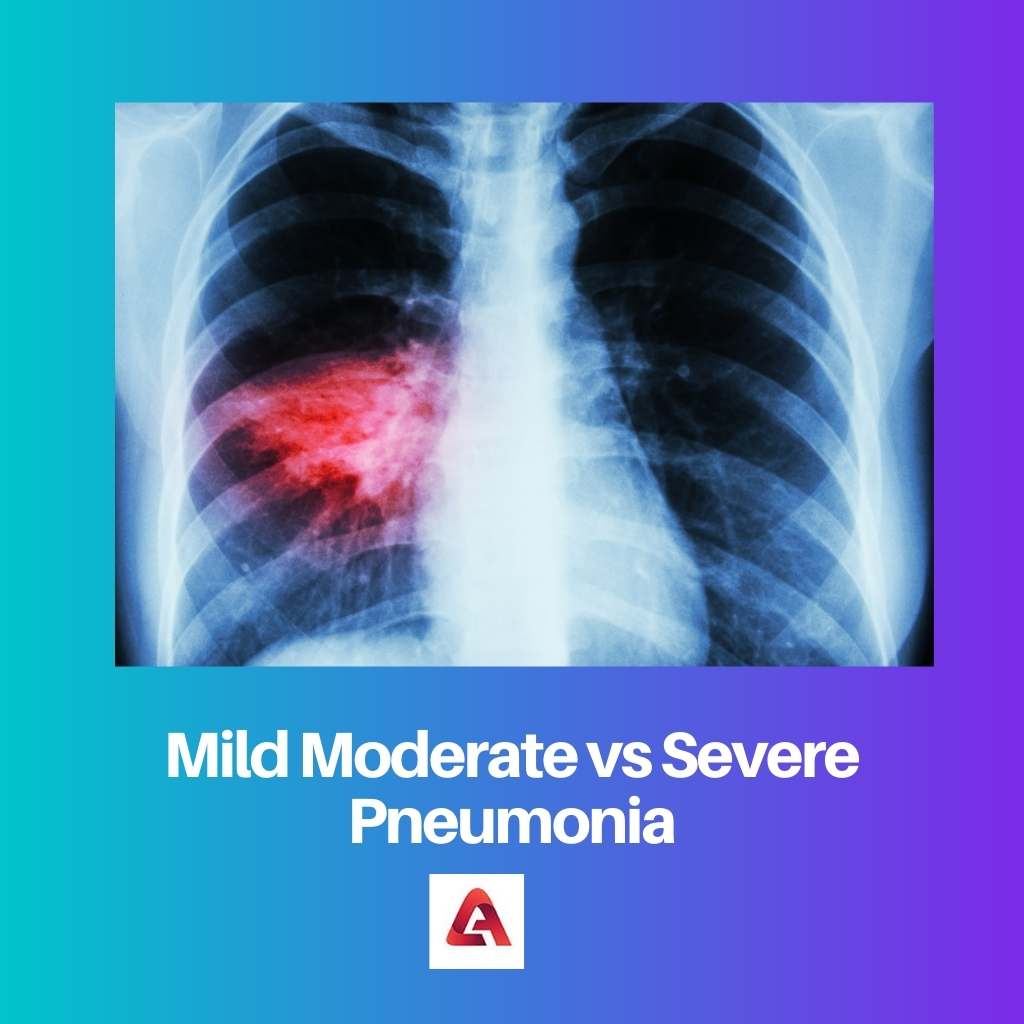Pneumonia is a type of lung disease that causes inflammation in the lungs, which leads to breathing problems, chest pain, chills, fever, fatigue, persistent cough, and sometimes shortness of breath.
The most common form of pneumonia is caused by bacteria or viruses that enter the lungs through the airway. Depending on the particular symptoms, there are three different grades of severity for pneumonia Mild, Moderate, and Severe.
Key Takeaways
- Mild pneumonia has few symptoms and can be treated at home, while moderate pneumonia requires medical intervention and may necessitate hospitalization.
- Severe pneumonia involves life-threatening symptoms and requires immediate hospitalization and intensive care.
- Risk factors, such as age and underlying health conditions, influence the severity of pneumonia and the required treatment approach.
Mild Moderate vs Severe Pneumonia
Mild pneumonia causes mild symptoms, such as cough and fever, and can be treated with rest and antibiotics. Moderate pneumonia causes more severe symptoms, such as shortness of breath and chest pain. Severe pneumonia is a medical emergency that can lead to life-threatening complications.

A Mild and Moderate Pneumonia case of pneumonia will primarily affect the upper respiratory system. As a result, the main symptoms will include a dry cough, shortness of breath, and fever.
As the lungs fill with excess fluid, the person suffering may start to notice that the chest hurts when breathing in or out.
A Severe Pneumonia case will involve the lower respiratory system. As a result, the lungs fill up with fluid, which pushes down on the air sacs and causes intense pain when a person suffering tries to breathe.
The main symptoms include fever, chills, exhaustion, and a particularly bad cough that causes one to throw up blood at times.
Comparison Table
| Parameters of Comparison | Mild Moderate Pneumonia | Severe Pneumonia |
|---|---|---|
| Definition | Mild Pneumonia and Moderate occur when the infection has spread into one lobe of the lung. | In a Severe Pneumonia case, the lungs fill up with fluid, which pushes down the air sacs and causes intense pain when trying to breathe. |
| Affected Area | A Mild and Moderate case of pneumonia will primarily affect the upper respiratory system. | A Severe Pneumonia case will involve the lower respiratory system. |
| Manifestation | Dry cough, shortness of breath, and fever. | Fever, chills, exhaustion, and a particularly bad cough that causes to throw up blood at times. |
| Therapeutic | Mild and Moderate Pneumonia is simply and easily curable. | Severe Pneumonia cannot be cured and is very difficult to treat. |
| Death-dealing | A Mild and Moderate are not death-dealing. | Severe Pneumonia is death-dealing. |
What is Mild Moderate Pneumonia?
Mild pneumonia, which is also known as lobar pneumonia, occurs when the infection has spread into one lobe of the lung. The symptoms are mild respiratory problems like fever, weakness, shaking, chills, and cough.
The beginning stages of mild pneumonia are also called acute bronchitis. An X-ray reveals puffy white areas in the infected lobe of the lung.
Moderate pneumonia may occur if there is vascular inflammation or blood vessel damage to the lung tissue. The symptoms are similar to those of mild pneumonia, with the addition of more serious respiratory problems like trouble breathing and shortness of breath.
As your lungs fill with excess fluid, the person may start to notice that the chest hurts when breathing in or out. It may also be difficult to breathe when exercising.
Mild and Moderate Pneumonia is an infection that attacks the lungs, the organ responsible for respiration. However, it can be fatal if left untreated.
Many different types of bacteria cause Mild and Moderate Pneumonia. The flu is one of the most common causes of Mild and moderate pneumonia.
What is Severe Pneumonia?
Severe pneumonia is a dangerous and life-threatening form of lung infection. Severe pneumonia is an infection that has spread throughout the lung.
Severe pneumonia is also caused by damaging the blood vessels in the lungs. Moreover, this form of pneumonia cannot be cured and is very difficult to treat. Unfortunately, without treatment, it can be death-dealing.
Severe Pneumonia is involved with the lower respiratory system. The most common symptoms of Severe Pneumonia are chest pain, difficulty breathing even when lying down, fever greater than 101 degrees Fahrenheit, shaking chills, and cough producing thick yellow or green mucus.
Along with these symptoms, patients may also suffer from a condition well-known as Pneumonia of Very High Severity.
Severe Pneumonia can cause the lungs to fill up with fluid, which pushes down on the air sacs and causes intense pain when trying to breathe.
In some cases, people get Severe Pneumonia so serious they require hospitalization because it can quickly become life-threatening.
Severe Pneumonia disease is most common and death-dealing among the elderly and those who have a compromised immune system.
Main Differences Between Mild-Moderate and Severe Pneumonia
- Mild and Moderate Pneumonia occurs when the infection has spread into one lobe of the lung, whereas, in the Severe Pneumonia case, the lungs fill up with fluid, which pushes down your air sacs and causes intense pain when trying to breathe.
- A Mild and Moderate Pneumonia case of pneumonia will primarily affect the upper respiratory system, whereas, Severe Pneumonia case will involve the lower respiratory system.
- The manifestation is Mild and Moderate Pneumonia of dry cough, shortness of breath, and fever, whereas, Severe Pneumonia is fever, chills, exhaustion, and a particularly bad cough that causes one to throw up blood at times.
- Mild and Moderate Pneumonia is simply and easily curable, whereas, Severe Pneumonia cannot be cured and is very difficult to treat.
- Mild and Moderate are not death-dealing, whereas, Severe Pneumonia is death-dealing.



